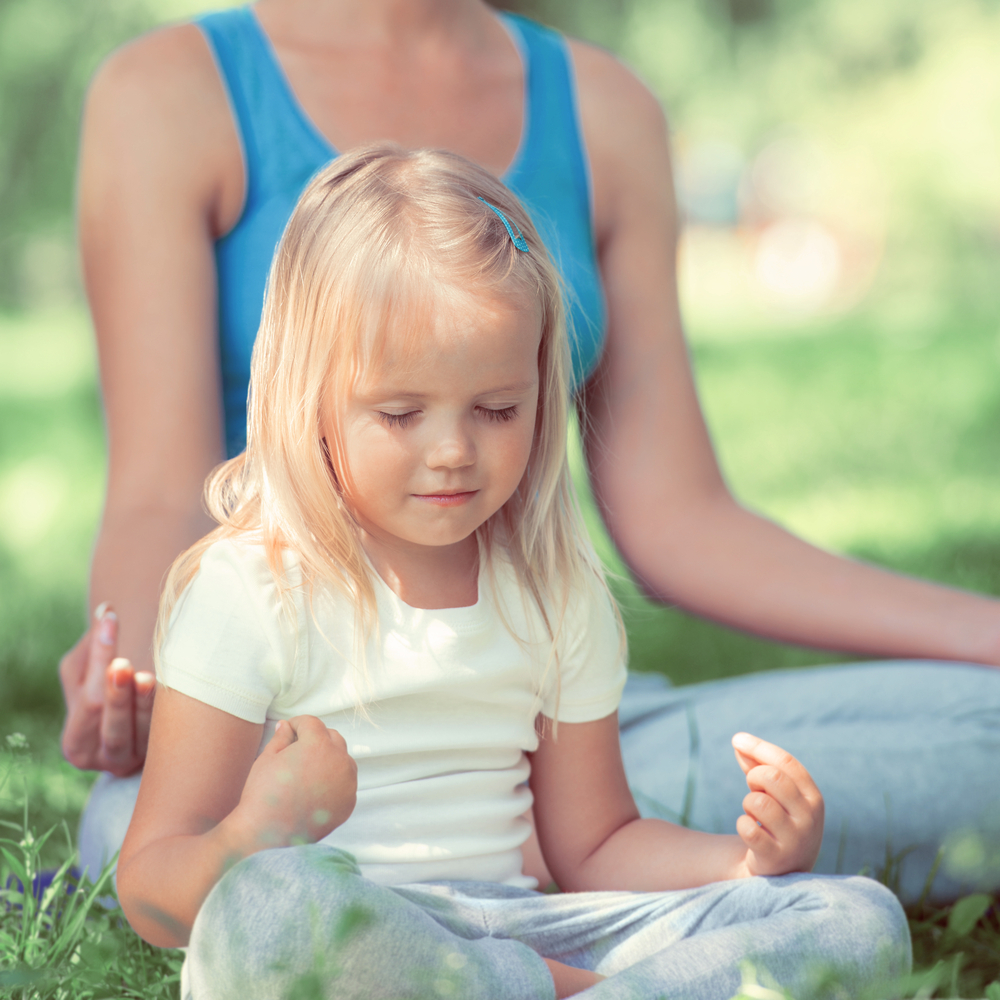Mindfulness isn’t a new concept. But this age-old practice from Buddhist tradition has slowly made its way across the globe over the past few years. While this concept is usually introduced to adults, teaching mindfulness for kids has a lot of benefits, too.
If you’ve been wanting to get your child started with mindfulness but just don’t know where or how to begin, we wrote this article just for you. Below, we discuss the benefits of mindfulness, how to approach it, and some simple and effective practices you can start at home.
But first, what is mindfulness?
What Is Mindfulness?
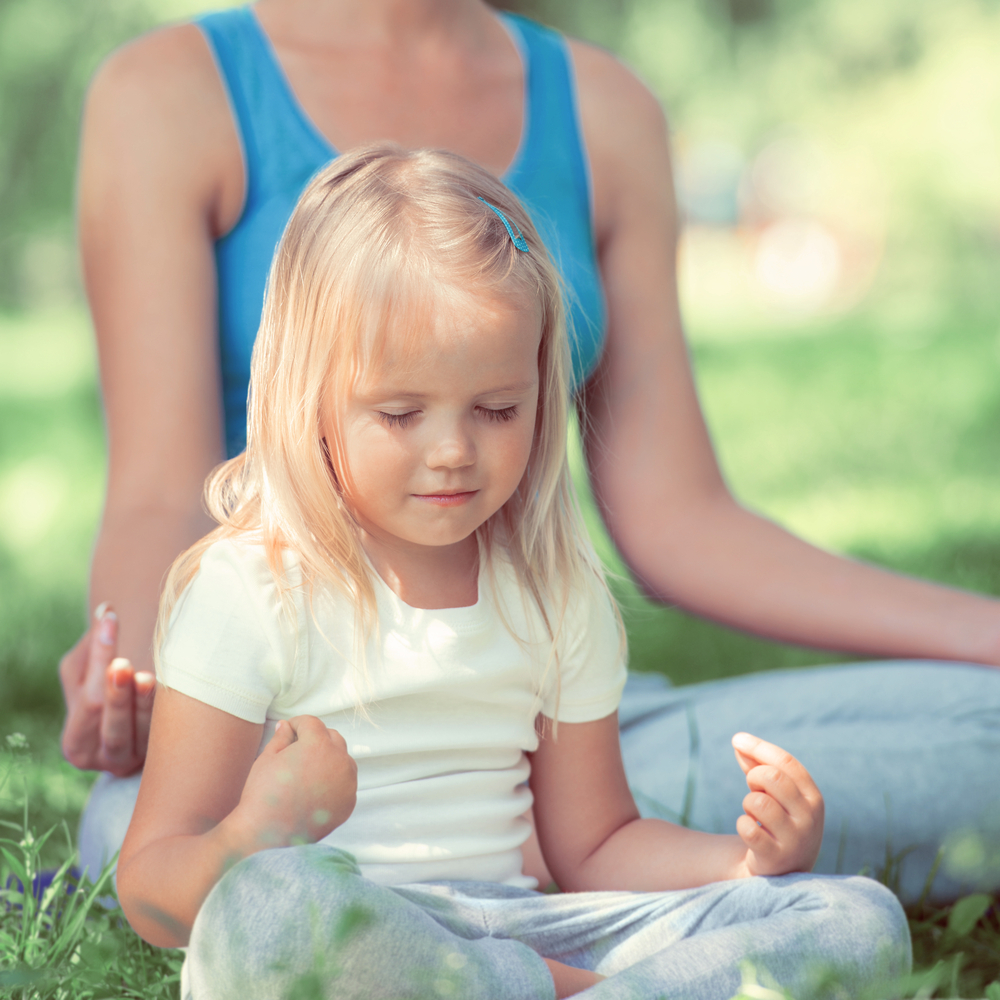
As the practice of meditation for mindfulness has become more widespread, there’ve been a few misconceptions about what it actually is. Most people describe it as a way of clearing your mind or reaching an emotionally “calm place,” but that’s not entirely the case.
Mindfulness is about being fully present. It’s about being aware of your feelings, thoughts, what you’re hearing, and anything else you notice in the present moment. You can also think of it as having a kind and honest look at what you’re currently experiencing.
We’re well into the digital age, and it’s often challenging to focus on what is going on around us. Mindfulness helps us clear out distractions and brings our focus back to where it’s needed — the present.
Why Teach Mindfulness For Kids?
Life can be challenging. And it all starts from the moment we’re born and begin to understand the world.
As toddlers, we work hard to learn to speak while also developing gross motor skills that help us move around. When we enter the school system, we are then faced with the challenges of learning how to get along with others in a group, learning something new every day, developing self-control, trying to gain independence, and so much more.
All of these everyday situations can be naturally stressful for any child to face. When we teach mindfulness for kids, we give our children tools that they can use to cope with all of this stimulation.
Studies have also shown that there are many incredible benefits of mindfulness for kids. In a nutshell, mindfulness helps:
- Reduce stress levels, anxiety, depression, and disruptive behavior
- Increase focus, classroom participation, self-control, and compassion
- Assist in improving academic performance
- Improve children’s overall well-being
How To Approach Mindfulness For Kids
Keep Things Simple
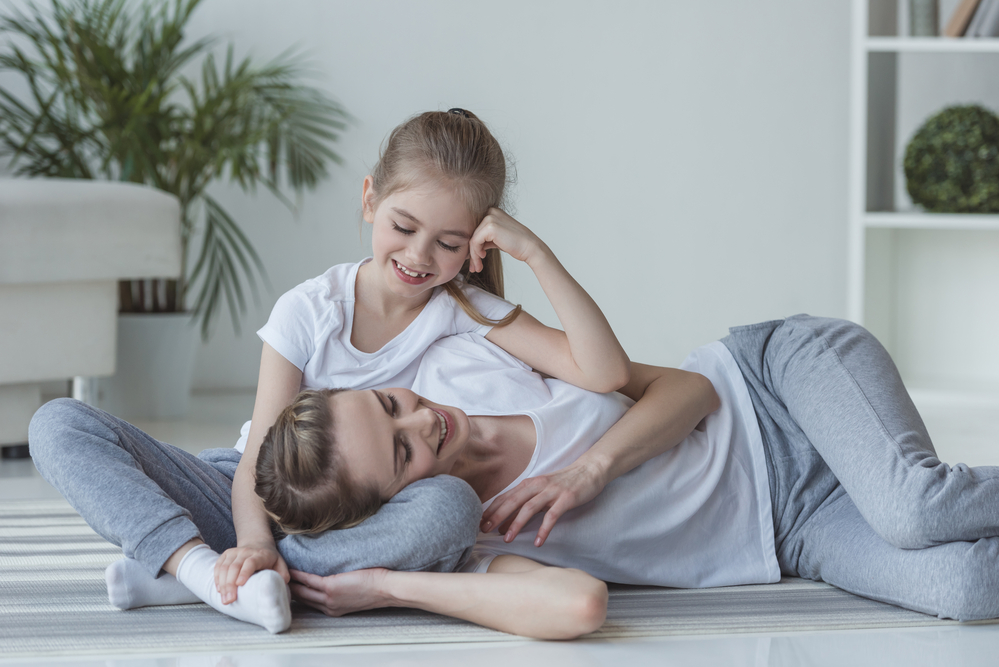
It’s essential to exercise patience and focus on simplicity with your young learner. Depending on their age, they may not even fully understand what you mean by “be present.”
When you’re just beginning, it’s best to keep things simple by starting small — you can start with 30 seconds of meditation and then increase the time as your child gets comfortable sitting still and focusing.
Model Mindfulness
While reading about mindfulness can give you a good idea of what it is, it’s challenging to teach something you don’t practice yourself. So, if you haven’t started already, take this as an opportunity to learn something new.
The beauty of practicing mindfulness is that, while the sessions may just last for a few minutes, the benefits trickle into our daily lives.
Outside of the meditation sessions, show your child what it means to be “present” — pay attention when they tell you about how school was today, take a walk together and soak in the sunshine, or put your phone down during dinner.
These mindfulness habits will be beneficial for both you and your family.
Manage Your Expectations
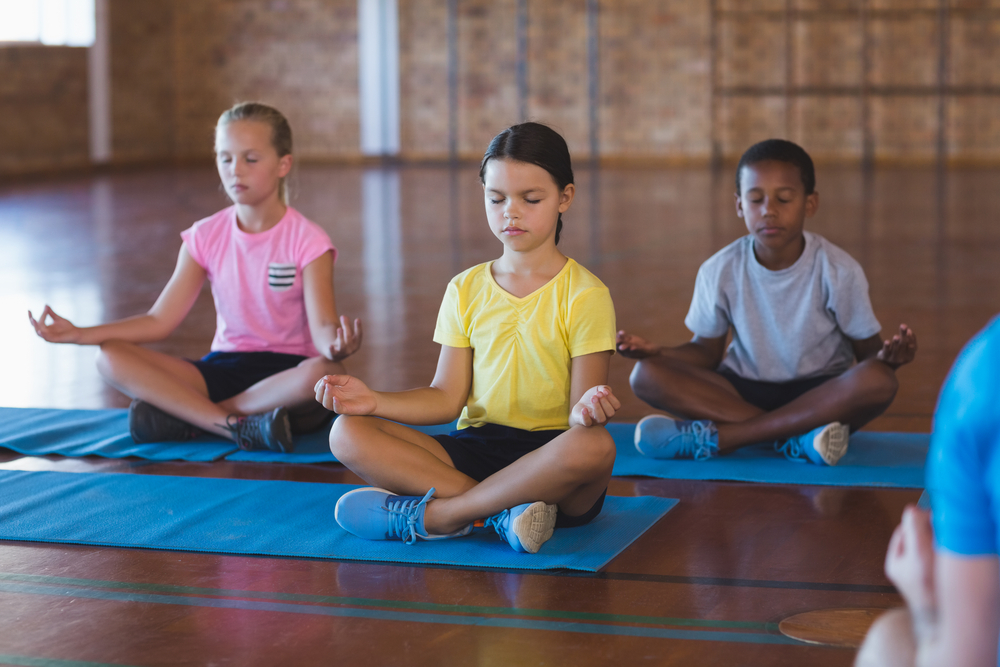
Do you expect mindfulness to help your active child become calm? Are you trying to get rid of their tantrums? Do you think your house will be quiet once you start practicing?
If any of these are your expectations, you’re likely to be disappointed. While the practice of mindfulness can help your child manage their emotions, this isn’t (and shouldn’t be) the ultimate goal.
The purpose of introducing mindfulness to children is to give them the tools of self-awareness, to understand that their thoughts are just thoughts, and to be aware of where their attention goes, amongst other things.
It cannot get rid of normal child behavior, like throwing tantrums, whining, arguing, or being too loud.
Don’t Force It
If your child isn’t keen on the idea of sitting still for a moment, it’s best to leave the activity for that day instead of trying to force them to participate. You can always try tomorrow or another time when they’re likely to be more receptive.
You don’t want to start shouting and being forceful because the last thing you want is for them to associate mindfulness with any sort of tension or fighting.
5 Simple Ways To Introduce Mindfulness
1) Breathing Exercises
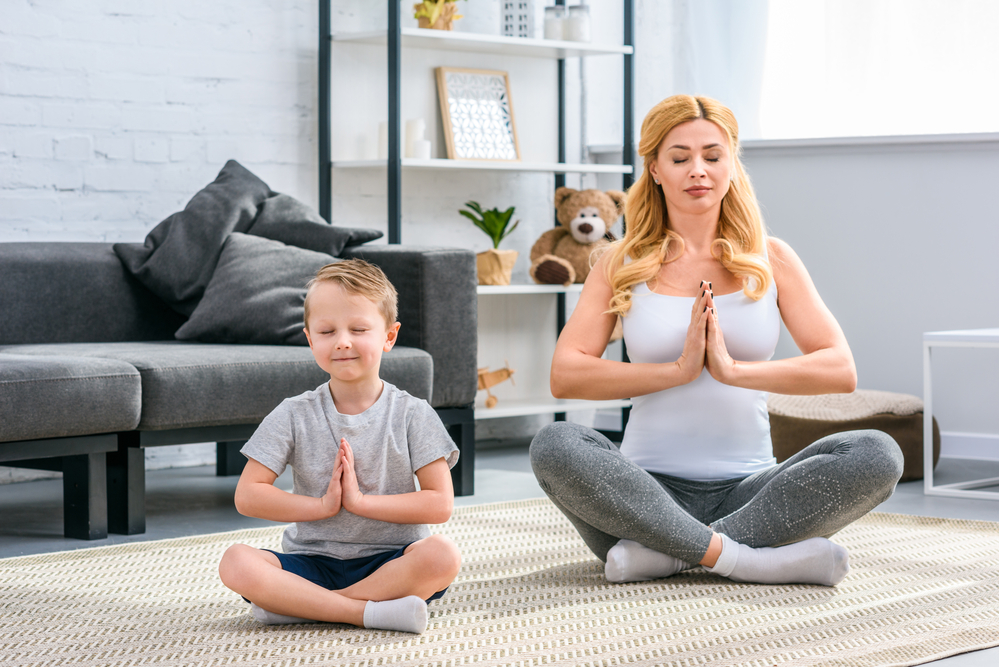
Breathing is one of the most popular meditation techniques, but explaining that “all you need to do is focus on your breathing” can be a difficult instruction for young children to follow.
Instead, you can encourage them to focus on their breathing by introducing them to breathing exercises. Here are a few you can try:
Belly Breathing
To get started, have your child place one hand on their belly and another on their chest. While breathing, have them notice the gentle rise and fall of their chest and abdomen.
You can count out loud while doing this exercise. Encourage your child to try breathing in for a count of four, hold for two counts, and then breathe out for a count of six.
Teddy Breathing
For this breathing exercise, have your child lie down with a teddy bear on their belly. This time, they’ll need to closely watch how the teddy moves up and down with each breath.
Mindful Breathing
The goal of this exercise is to encourage your child to notice their breath as it moves in and out their body.
To make it more engaging, you can also add words. For instance, before they breathe in, you can encourage them to say the phrase, I am an ocean, and after they breathe out, I am calm.
After five total counts of breathing, you can then ask your child how they’re feeling. Whether they feel relaxed, grumpy, or calm, it’s all okay. Every emotion is welcomed during mindfulness.
2) Meditation
At its core, meditation is a practice of mindfulness and self-awareness. By introducing this to your child regularly, you can help them learn how to observe their stressful thoughts without judgment and relax when they need to.
This self-awareness can be beneficial when they are studying, meeting new people, and in many other real-life scenarios.
At HOMER, we’re huge advocates of introducing meditation to kids because we understand the incredible benefits it has. Here’s an article to help you and your child get started.
3) Draw An Everyday Object
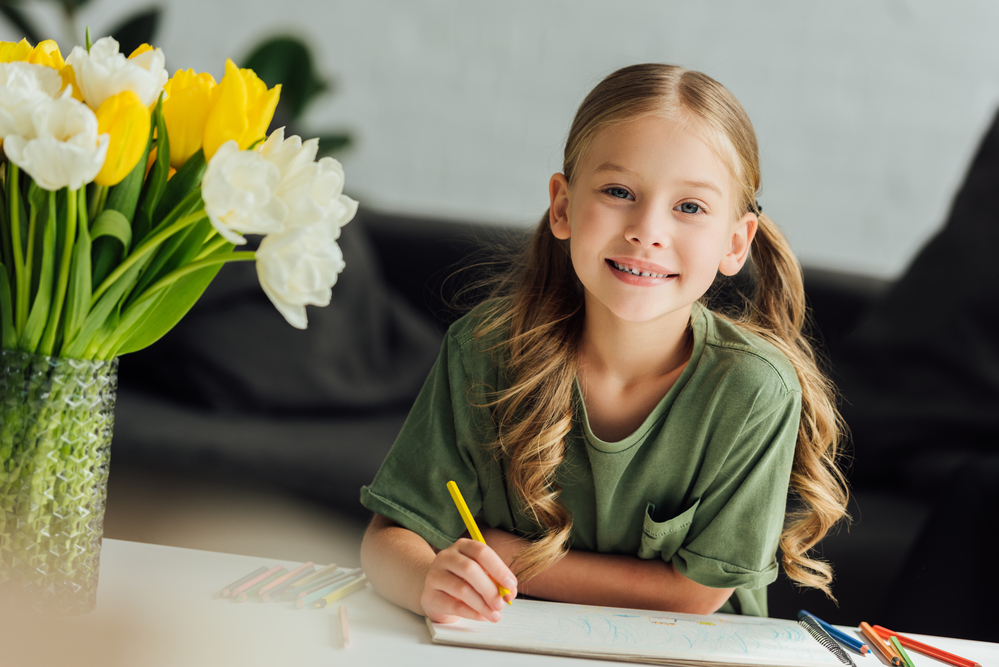
For this exercise, you’ll need to hand your child an ordinary object, like a flower or a leaf, then encourage them to take a moment and look at it closely. They’ll need to look at the interesting colors, lines, patterns, and anything else they notice.
Next, ask your young learner to draw the object. Let them know that they can take their time with the drawing and encourage them to include the item’s details.
This exercise encourages children to pay full attention to one thing for a little while.
4) Sensory Bag
To get started, fill a bag with small, interestingly shaped, and textured items. These can include rocks, cotton wool, paper clips, leaves, sand, and anything else you can find.
Your child will need to feel and describe what they are touching with their eyes closed. Similar to the previous activity, this exercise helps bring children to the present moment.
With their eyes closed, they’ll need to forget about what they may be hearing or smelling and focus on what they feel at that moment. As mentioned, focusing on the now is a key part of mindfulness.
5) Make A Mind Jar

You’ll need a clear jar (i.e., mason jar), water, glitter glue (or glue), and dry glitter for this activity.
Start by filling the jar up almost all the way with water, and then add a spoonful of the glitter glue and dry glitter. After putting the lid back on, shake the jar well to make the glitter swirl.
Then, say the following words to your child (or take inspiration from them and create your own script):
Imagine that the glitter represents your thoughts when you’re worried or upset about something. They are swirling fast, and it’s hard to see clearly, right? That’s why it’s hard to think clearly when you’re upset.
Now, place the jar down and allow the contents to settle.
Watch what happens when the jar is still for a moment. The water and glitter slowly start to settle. We can now see clearly. The same thing happens when we’re upset. If we are calm for a moment, our thoughts stop rushing, and we’re able to start thinking clearly.
You can remind your child that breathing exercises can help them achieve this calm state while they are stressed or upset.
This is a great activity for teaching kids about strong emotions. It also helps with mindfulness as they will be focused on the swirling of the glitter.
It’s Time To Be Present!
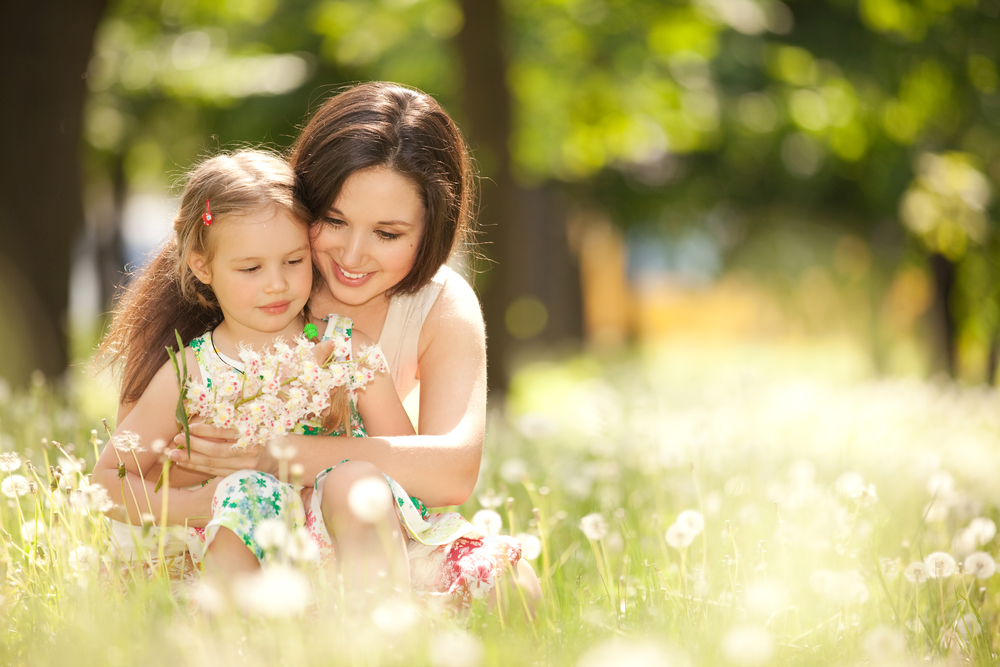
Mindfulness can help children (and adults) learn to fully embrace their current thoughts and emotions and let go of the past and future distractions.
So, when is the best time to teach mindfulness for kids? There’s no better time than the present! Check out the HOMER Learn & Grow app for more creative ways to get your young learner engaged.
,


